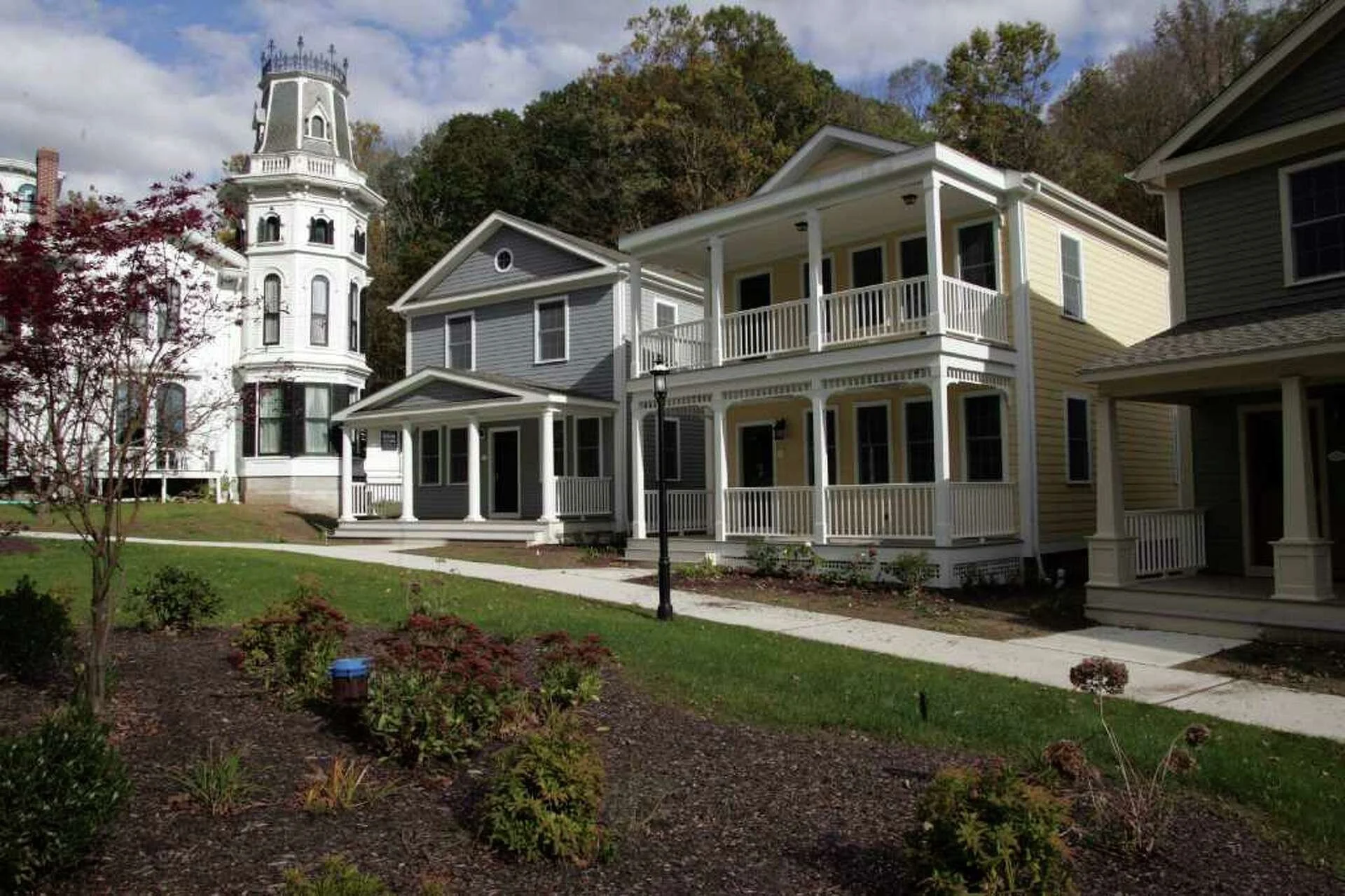Why Regional Theatres Must Start Taking Artist Housing Seriously
Artist’s Village at the Goodspeed Opera House
by Chris Peterson
Regional theatre has always been a place for possibility. It’s where new work finds its first breath, where audiences and artists build lasting relationships, where creativity happens without the pressure of New York critics or Broadway budgets. It’s where a lot of careers begin—and where many stay, by choice.
But there’s a question we’re not asking nearly enough: Where are the artists sleeping?
Housing for out-of-town actors, designers, and directors has become one of the most overlooked challenges facing regional theatres today. Not because it’s flashy or exciting—but because it’s hard. Logistically complicated. Expensive. Easy to push aside. But that doesn’t make it any less urgent.
For many artists, housing defines the experience. And when theatres don’t prioritize it, the results are clear: fewer people accept contracts. More drop out mid-process. Burnout rises. Quality drops. And ultimately, the entire production suffers.
We don’t talk about that enough.
Most regional theatres do their best. Company managers juggle apartments, Airbnbs, hotels, whatever’s available, whatever fits the budget. But with rising costs, staffing cuts, and shrinking seasons, housing support often becomes a patchwork of short-term fixes. Or it vanishes altogether.
And when it does, people start saying no. Not because they don’t want to do the work, but because the logistics have become too overwhelming.
I’ve spoken with artists who’ve shared hotel rooms with strangers. Slept on floors. Driven an hour each way just to get to rehearsal. None of these are ideal conditions for producing meaningful, connected, live performance. Theatres know this, but many feel stuck—trapped between ambition and budget, intention and reality.
Meanwhile, over in East Haddam, CT, the Goodspeed Opera House built an “Artists Village.” It’s modest. Functional. But it tells every guest artist: You matter. That small shift in value—care built into infrastructure makes all the difference. It doesn’t just attract talent, it retains it. Word travels. People come back.
It’s not the only model. In the 1970s, New York’s Manhattan Plaza became a haven for working artists, proving what could happen when housing and art were treated as partners, not adversaries. Thousands of performers got their footing because someone decided they deserved stable shelter while pursuing their craft.
We’re seeing that same need emerge again. Across the country, in theatre communities big and small. In Los Angeles, when the Hollywood Arts Collective opened 151 affordable units for artists, over 15,000 people applied. That’s not just interest, it’s desperation. It’s proof that the artistic workforce is being priced out, and fast.
Regional theatre can’t ignore this. It won’t be enough to hope artists “figure it out.” They already are. They’re choosing not to travel. They’re staying local. They’re leaving the business. And that quiet attrition is eroding the artistic pool in ways that many institutions won’t realize until it’s too late.
This is the time to get creative, not just on stage, but behind the scenes. Housing can’t be left to chance anymore. It must be part of the planning process, the development strategy, and the funding pitch. It’s not separate from the mission; it’s essential to it.
I believe regional theatre is capable of rethinking this challenge. It can build new partnerships with local developers, community housing initiatives, and municipalities that understand how vital the arts are to civic life. I believe boards can shift their priorities, donors can be inspired by real impact, and unions can advocate for housing minimums just as fiercely as they do for salaries.
And audiences would support it if they knew. Because audiences come back for one thing: the people. The stories, the connection, the artistry. If they understood how much of that hinges on something as simple as where an actor lays their head at night, I think they’d step up.
Theatre has always required faith—a willingness to believe in something that doesn’t exist yet. That same energy needs to be applied here. Theatres that choose to invest in artist housing are choosing a long game. They’re building not just shows, but reputations. Relationships. Futures.
This isn’t about luxury. No one is asking for spa amenities or penthouse views. Artists need a clean, safe, private place to sleep. A place to eat. A place to recharge. That’s not a perk, it’s the baseline.
The truth is, we lose a little magic every time a brilliant performer declines a contract because they can’t afford to be homeless for six weeks. We lose insight every time a designer turns down a job because no one can confirm where they’d be staying. We lose momentum when artists burn out from the stress of balancing art with basic survival.
But we don’t have to keep losing. There’s still time to change course.
We can start by treating housing as non-negotiable. We can stop pretending that “the show must go on” is an excuse for putting people in bad situations. We can start valuing the entire artist, not just what they give from the stage but what they need off of it.
Theatres that lead in this area will be stronger for it. They’ll attract more talent. Build deeper loyalty. And create the kind of culture that artists talk about, long after the final bow.
Yes—actor housing is a problem. But it’s a solvable one. And solving it doesn’t just support the work—it elevates it. This is our chance to build something better. And that, to me, is the very heart of theatre.
